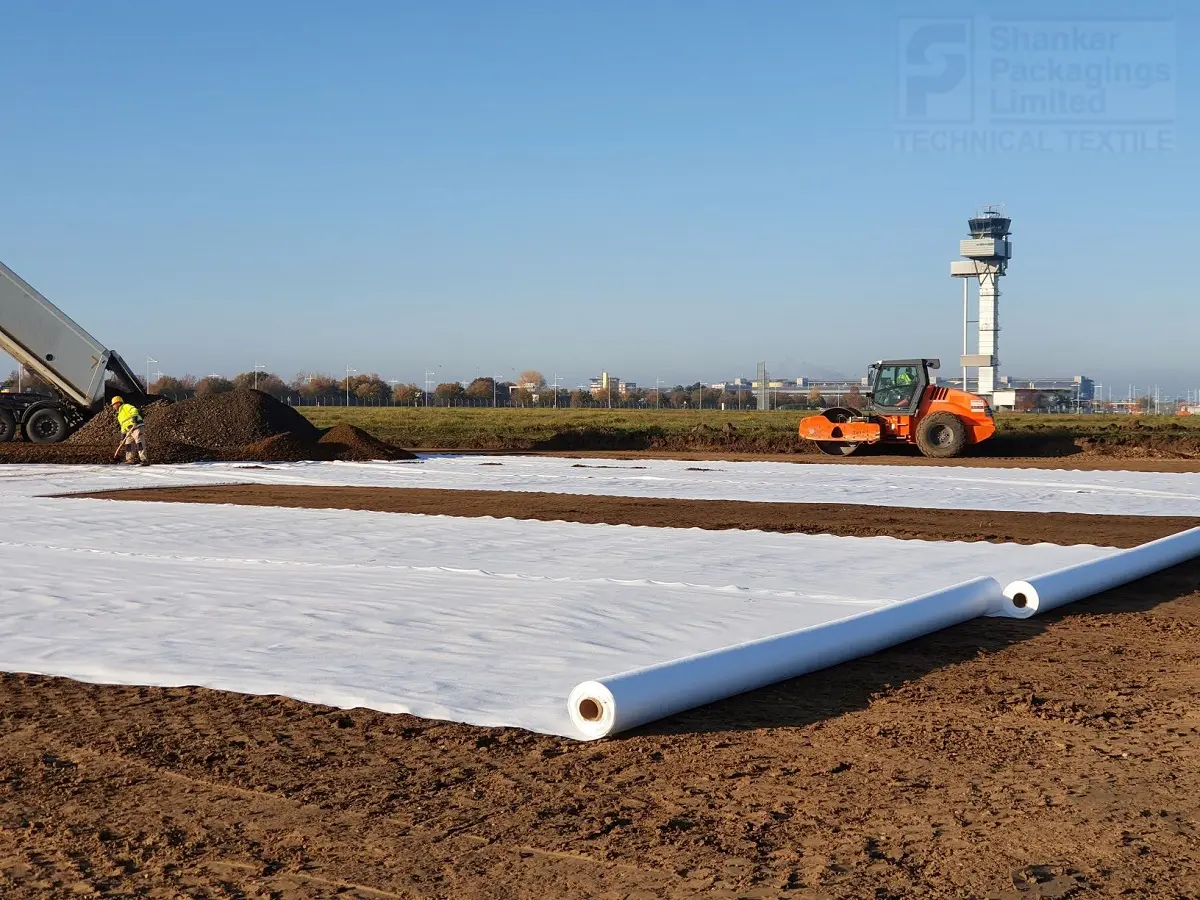- contact@shankartechx.com
- +91-7228999337
When we speak about geotextile filaments, the characteristic that is majorly emphasized is fracture resistance. This is typically referred to as the breaking force of the geotextile filaments.
It is associated with nature
When the fibre of Geosynthetic material is increasingly twisted, the resistance in the filament increases. The breaking strength won't be as good if the fibre is not tightly confined to one spot. Additionally, the coefficient of friction between filaments of the geotextile is also a significant factor in the strength of breaking.
Three primary kinds of plant structures are suitable for making filament geotextiles: plain, twill and satin. Of them, both satin and twill contain a large quantity of fibres that are part of the force owing to the density of the fabric that makes it break. Comparatively, the breaking point of plain weave filament geotextiles is significantly lower.
Functions and Application of Geotextiles Filament
As discussed earlier, Geotextiles made of filament have a variety of characteristics, making it normal for them to become widely utilized.
Here Are the Purposes and Uses of Geotextiles Made From Filament:
Geotextiles and Geomembranes filament are typically used for defence, reinforcement, and anti-seepage. This means they prevent the toxic fluids from leaking into the environment, which can harm humans and nature.
Geotextiles made of filament serve the purpose of preventing seepage, reinforcement and drainage water filtration. One aspect of they are used to stop the loss of soil and water and improve the construction's durability. In addition, it increases the project's durability and prolongs the service's life.
The geotextile fabric manufacturers offer filament geotextiles primarily used as a drainage system and reinforcement. In other words, on one hand, they alter the properties of geotextiles and improve their bearing capacity on the road's surface; in the opposite direction, they also extend the life span of the road.
For how long can Filament Geotextiles be Used?
Typically, geotextile filament with a specific quality guarantee and being used correctly can be extended to more than 50 years. And if any influence from other elements is eliminated, it may last up to 100 years in ideal conditions.
If research and data are to be believed, the geotextile filaments, if buried in the soil, decrease by less than 20% over ten years. This means that its performance will be intact as much as 80%.
When Geogrid material gets exposed to direct sunlight for an extended period, filament geotextile will be employed for five years, and the efficiency is much lower.
Future Prospects of Filament Geotextile
When people learned the benefits of geotextile filaments, there was an increase in the geotextile filaments employed in infrastructure construction.
Regarding current trends, the future development of geotextile filament is essential because, with advancements in society, many infrastructures still require expansion. Therefore, these materials are critical in mining and geotextile in road construction.
Geotextile filament can substitute conventional construction materials and engineering techniques, thereby making construction more secure, protecting the environment, and solving fundamental issues that arise in engineering buildings in the long term.
Benefit of Filament Geotextiles
The filament geotextiles and Geosynthetics produced by filter cloth manufacturers like leading Techx companies like Shankar Techx have numerous benefits that make them popular in various construction and engineering projects.
Shankar Techx is a leading manufacturer of Geotextile, Geosynthetic clay liners, Backing fibres, filtration fabric, coating subtracts, tire liners and other products. Request a quote or contact us to learn more about our products and how they can help you.
Also Check: An Overview of Geotextile- Types and Uses
